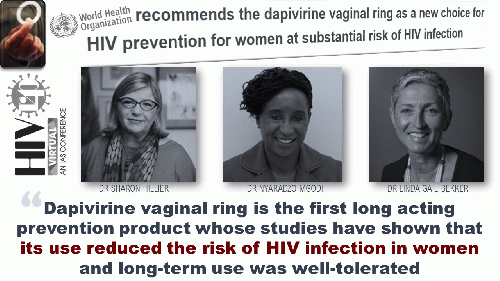
Women initiated methods for preventing transmission of HIV and other STIs and pregnancy are vital along with stamping out patriarchy
(Image by CNS) Details DMCA
You guessed it right. I am talking about the dapivirine vaginal ring (DPV-VR), which is one of the top advances happening in the field of microbicides. It is the first long acting prevention product whose Phase-3 randomised controlled studies have shown that using the dapivirine vaginal ring reduced the risk of HIV infection in women and long-term use was well-tolerated.
The World Health Organization (WHO) has just recommended it as a new prevention choice for women at substantial risk of HIV infection as part of combination prevention approaches. The European Medicine Agency has already given a positive scientific opinion on its use, and it has been submitted for regulatory approvals in many countries of Africa and in the USA.
Patriarchal norms have long forced women's sexual health needs to remain on the blind spot. The economic, social and cultural barriers faced by women often disempower them to exercise their right to negotiate use of prevention options for HIV (and other STIs and unintended pregnancy) with their partners. If we are to end AIDS and achieve zero new HIV infection goal, then it is vital to have more women initiated methods to prevent transmission of all STIs including HIV, and unintended pregnancies. That is why dapivirine vaginal ring provides the much needed ray of hope.
what is the ring?
The dapivirine vaginal ring is a female-initiated option to reduce the risk of HIV infection. It is a silicon ring impregnated with 25mg of the drug dapivirine (a non-nucleoside reverse transcriptase inhibitor). It is easy to bend and insert in the vagina, where it must be worn for a period of 28 days, after which it should be replaced by a new ring. The ring works by releasing the antiretroviral drug dapivirine from the ring into the vagina slowly over a period of 28 days.
This is indeed a revolution in the field of new innovations for HIV prevention, which is now more than just distribution of condoms and pills. And this is just the beginning, with newer technologies in the offing.
"In my own view this is going to be a product that could have real utility because it is extremely safe and because it is such a tiny amount of drug so it would not require a lot of medical monitoring. So it is not going to be very medicalized. All you really need is a rapid test and a dispensation", said Dr Sharon Hillier, Professor, Department of Obstetrics, Gynaecology & Reproductive Sciences and Microbiology and Molecular Genetics, University of Pittsburgh, during an interaction with a group of select global journalists ahead of the ongoing virtual 4th HIV Research for Prevention (HIVR4P) International Conference.
"When the ring is rolled out, it will be critically important to figure out where to promote it most efficiently. For example, as very little drug comes out of the ring, it might make it a very attractive choice for a woman who is breastfeeding as not much drug will get into the breastmilk. We are doing a study of testing this vaginal ring in breastfeeding women which will be over by September 2021. Another study is also currently underway on pregnant women", she shared.
(Note: You can view every article as one long page if you sign up as an Advocate Member, or higher).





